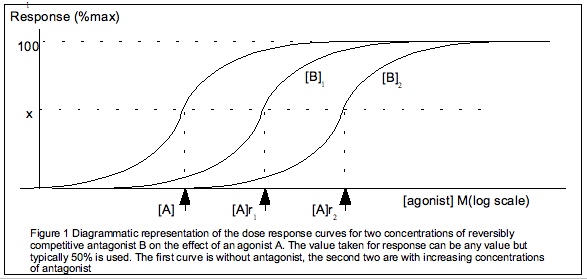|
LT50
LT50 is the median Lethal Time (time until death) after exposure of an organism to a toxic substance or stressful condition. LT50 is commonly used in toxicology studies to quantify amount of a stressor necessary to kill an organism. LT50 can be used in conjunction with EC50 (median Exposure Concentration) for even more precise quantification. See also * Acute toxicity * Viability assay A viability assay is an assay that is created to determine the ability of organs, cells or tissues to maintain or recover a state of survival. Viability can be distinguished from the all-or-nothing states of life and death by the use of a quanti ... References Toxicology {{biology-stub ... [...More Info...] [...Related Items...] OR: [Wikipedia] [Google] [Baidu] |
Acute Toxicity
Acute toxicity describes the adverse effects of a substance that result either from a single exposure or from multiple exposures in a short period of time (usually less than 24 hours). To be described as ''acute'' toxicity, the adverse effects should occur within 14 days of the administration of the substance. Acute toxicity is distinguished from chronic toxicity, which describes the adverse health effects from repeated exposures, often at lower levels, to a substance over a longer time period (months or years). It is widely considered unethical to use humans as test subjects for acute (or chronic) toxicity research. However, some information can be gained from investigating accidental human exposures (e.g., factory accidents). Otherwise, most acute toxicity data comes from animal testing or, more recently, ''in vitro'' testing methods and inference from data on similar substances. Measures of acute toxicity Regulatory values Limits for short-term exposure, such as ... [...More Info...] [...Related Items...] OR: [Wikipedia] [Google] [Baidu] |
Aquatic Toxicology
Aquatic toxicology is the study of the effects of manufactured chemicals and other human impact on the environment, anthropogenic and natural materials and activities on : aquatic organisms, aquatic organisms at various levels of organization, from subcellular through individual organisms to communities and ecosystems. Aquatic toxicology is a multidisciplinary field which integrates toxicology, aquatic ecology and aquatic chemistry. This field of study includes freshwater, marine water and sediment environments. Common tests include standardized acute and chronic toxicity tests lasting 24–96 hours (acute test) to 7 days or more (chronic tests). These tests measure endpoints such as survival, growth, reproduction, that are measured at each concentration in a gradient, along with a control test. Typically using selected organisms with ecologically relevant sensitivity to toxicants and a well-established literature background. These organisms can be easily acquired or cultured in la ... [...More Info...] [...Related Items...] OR: [Wikipedia] [Google] [Baidu] |
EC50
] Half maximal effective concentration (EC50) is a measure of the concentration of a drug, antibody or toxicant which induces a Stimulus%E2%80%93response_model, response halfway between the baseline and maximum after a specified exposure time. More simply, EC50 can be defined as the ''concentration required to obtain a 50% ..effect'' and may be also written as sub>50. It is commonly used as a measure of a drug's potency, although the use of EC50 is preferred over that of 'potency', which has been criticised for its vagueness. EC50 is a measure of concentration, expressed in molar units (M), where 1 M is equivalent to 1 mol/ L. The EC50 of a ''graded'' dose response curve therefore represents the concentration of a compound where 50% of its maximal effect is observed. The EC50 of a ''quantal'' dose response curve represents the concentration of a compound where 50% of the population exhibit a response, after a specified exposure duration. For clarification, a grade ... [...More Info...] [...Related Items...] OR: [Wikipedia] [Google] [Baidu] |
Viability Assay
A viability assay is an assay that is created to determine the ability of organs, cells or tissues to maintain or recover a state of survival. Viability can be distinguished from the all-or-nothing states of life and death by the use of a quantifiable index that ranges between the integers of 0 and 1 or, if more easily understood, the range of 0% and 100%. Viability can be observed through the physical properties of cells, tissues, and organs. Some of these include mechanical activity, motility, such as with spermatozoa and granulocytes, the contraction of muscle tissue or cells, mitotic activity in cellular functions, and more. Viability assays provide a more precise basis for measurement of an organism's level of vitality. Viability assays can lead to more findings than the difference of living versus nonliving. These techniques can be used to assess the success of cell culture techniques, cryopreservation techniques, the toxicity of substances, or the effectiveness of substanc ... [...More Info...] [...Related Items...] OR: [Wikipedia] [Google] [Baidu] |

